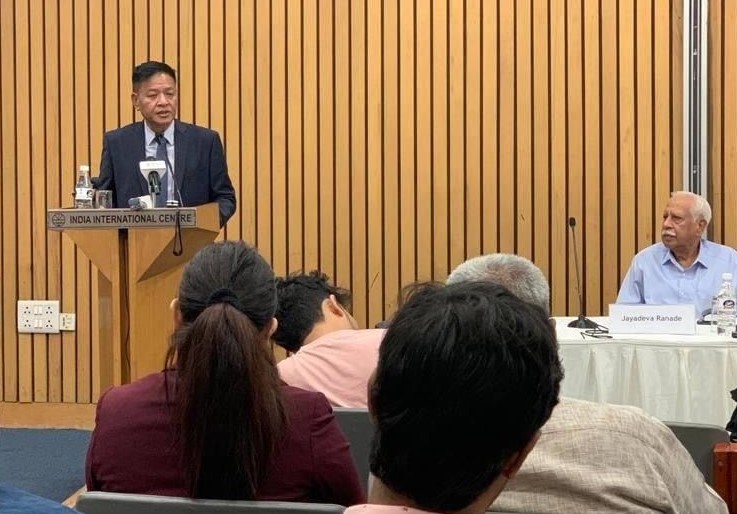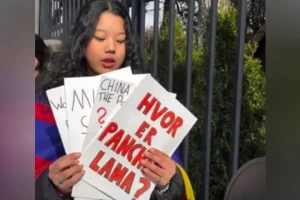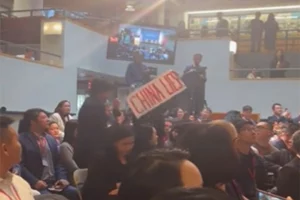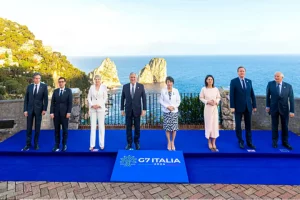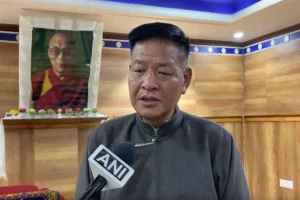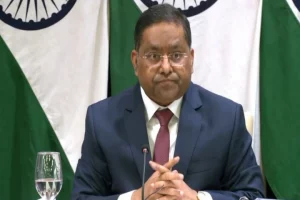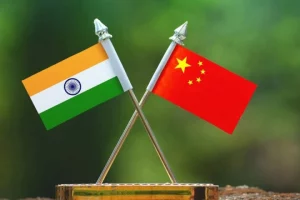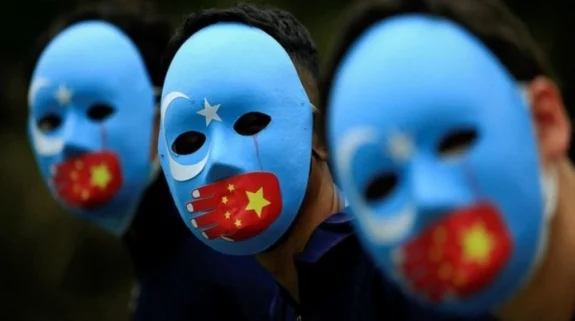China, which has adopted an aggressive strategy against India on the borders, is building nearly 400 villages around the Line of Actual Control (LAC) with India. It is building similar villages in the no man’s land at the Bhutanese border also.
Experts at a conference, China’s Tibet Policy Under Xi Jinping, organised by the Centre for China Analysis and Strategy (CCAS) said that Chinese border villages pose a security and a cultural threat to India. Jayadeva Ranade, President, CCAS said that India’s border regions are thinning out and China is looking at encroaching Indian areas in the future. He added that the border villages are a fusion of civilian and military personnel.
Tsewang Dorji, Research Fellow with the Tibet Policy Institute (TPI), said that the border villages in Tibet are called China’s new ‘eyes and ears’ as the Chinese border forces interact with the villages regularly. He said that as a way of indoctrination, the PLA has told villagers that in the 1962 war with India, the residents had guided the Chinese army, therefore the grandchildren also have to do the same.
The highlight of the conference was the address by Penpa Tsering, President, Central Tibetan Administration, who spoke about how a peaceful resolution of the Tibetan issue could impact global politics.
Tsering said: “Chinese President Xi Jinping wants one nation, one culture and one language at the cost of all other nationalities in China, adding that “As China is eliminating the very root of Tibetan identity, people are becoming a part of the Indian repository of ancient wisdom… Not many know that Tibet has a 2200-year-old history of relations with India. We believe that the first Tibetan king came from India”.
President of the Central Tibetan Administration, Sikyong Penpa Tsering states, “We Tibetans feel much more closer to India and Indians than we do to China”, at the conference organised by the Centre for China Analysis and Strategy. pic.twitter.com/RItbygwXon
— Sriparna Pathak (@Sriparnapathak) June 27, 2023
He said that India-Tibet relations have existed since the time of Kanishka, during whose reign Tibet received a scripture from India. “We could not understand it as we did not know the language but the scripture remained as a sacred document with us”, Tsering said.
He added that Buddhism came to India in the eighth century. Tibetan emperors did not accept Chinese buddhism even though the religion had traveled to China earlier. The Tibetans decided to accept Buddhism from Nalanda. Talking about the Indian influence, the Sikyong said that Tibetans translated all the Sanskrit verses and now hold a vast repository of Indian heritage.
Elaborating on the historical and cultural links between India and Tibet, Tsering said: “We are an extension of Indian culture, not Chinese culture as many people tend to believe… We are shaped by Indian thought and Buddha’s teachings of peace, non-violence and compassion, which His Holiness the Dalai Lama also espouses”.
“Overall vision of #XiJinping is to have one nation, one culture & one language at the expense of all other nationalities inside #Tibet. There is no political space which is taken for granted in the free world.” @SikyongPTsering at @CCASDELHI seminar on #China’s Tibet Policy… pic.twitter.com/OGnSei6bfp
— Namrata Hasija (夏海娜) (@hasijanamrata) June 27, 2023
Sikyong, as he is addressed in Tibetan, said that China is trying to break the cultural and historical links between India and Tibet. But the link with India remains strong for the Tibetans as they consider India their holy land.
He stressed that Tibet has always been independent historically. The Tibetan empire during the seventh and ninth centuries extended till Samarkand in Central Asia. It also existed parallely along with the Ming, Ching and Manchu empires, therefore, Tibet had remained a sovereign State all throughout history.
Sikyong said that the massive build up of infrastructure like airports, roads and railways in Tibet impact the region in many ways. “It brings more people into Tibet. The local temperature goes up which accelerates the retreat of glaciers which impacts water flow downstream…”. He added that waters from the Tibetan plateau feed the Brahmaputra and the Mekong rivers. The Chinese rivers – Yellow and the Yangtse – flow from Tibet. Last year when the flow from the Yangtze river went down, the power generation fell by half.
Tibet is called the roof of the world and also the water tower of Asia. The region is always covered by snow. Countries like Nepal, India, Bangladesh, Myanmar as well as at least five countries in the South-East Asian region will be impacted due to China’s infrastructure activity which will lead to water and food security problems in all these countries in the future.
China, under President Xi, is using artificial intelligence for surveillance. “If I have a visitor at home, who does something, then my entire family will be picked-up”. Tibet is under an Orwellian system of surveillance, Tsering said.
Talking about Xi’s policies in Tibet, Tsering said that according to Xi, the Communist Party of China has proven that economic development can take place under communist rule. In a bid to influence the Tibetans, “the infrastructure development in Tibet like helipads, roads and railways are touted as being beneficial for Tibetans but we know this infrastructure is for China’s benefit and goes against India”, Tsering said.
In his address, Tsering stressed that the international community has to understand Tibet from its geo-strategic importance, environmental importance, cultural importance and the historical recognition of Tibet. The international community cannot handle China with sanctions. The world has to stand-up for the various freedoms it espouses. Tsering said that non-violence and the middle path can pave the way for a resolution of the Chinese-Tibetan conflict.
Talking about the geo-political importance of Tibet, Tsering said that Tibet is a huge landmass, nearly 2.5 million sq km, as big in size as 60 per cent of India or 18 times as big as Japan. “If the Sino-Tibetan issue is resolved, it will bring peace to large parts of the world… and also between India-China”. He added that Pakistan and China together have one of the biggest arsenals of nuclear weapons in the world, therefore, the international community has to learn how to deal with China.
Tsering said that the CPC will keep alive the conflicts with India, Japan and Taiwan to ensure its survivability and sustainability. Even the US needs a trans-Atlantic alliance to tackle China, therefore, the middle way is the only solution.






